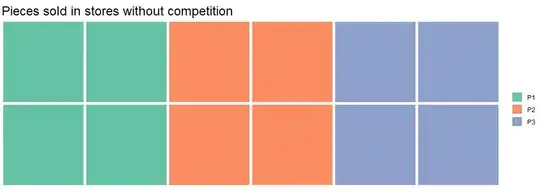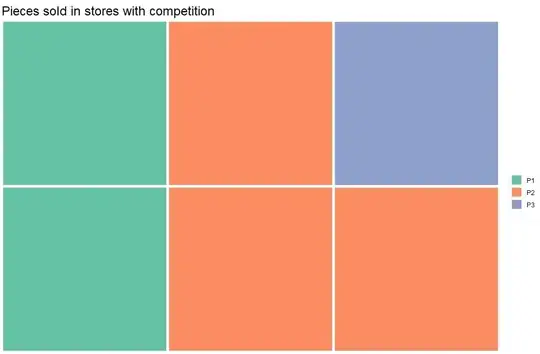As part of my studies of statistics, market analysis and data analysis, I’m facing the following problem but not sure if the answer I’m proposing it is correct or not. A commercial retail store with “n” number of stores have “p” number of stores without competitor and “q” number of stores with competitor near its ubication, with n=p+q and p>q, wants to measure the effects of the pieces sold of each one of the products when there is a competitor near. To exemplify my problem, I use a very simple data showed in the Table 1.
In the stores without competition product P1 sell 4 pieces, P2 sell 4 pieces and, P3 sell 4 pieces each one equivalent to 33.33% of the total sell.

Stores with competition sell P1 sell 2 pieces, P2 sell 3 pieces and P3 sell 1 piece, equivalent of 33.33%, 50% and, 16.67% respectively.

Using the formula Tot.Pcs.Sell.WC(% Par.Prod.WC- % Par.Prod.WoC), I get the number of pieces necessary to have the same distribution of the stores with competition as the stores without competition.
The overall problem involves information of 3000 products sell in 10000 stores around the globe, but I really need to know If I’m pointing out in the right direction.
Any help, suggestion or topic that I need to review would be very grateful.

